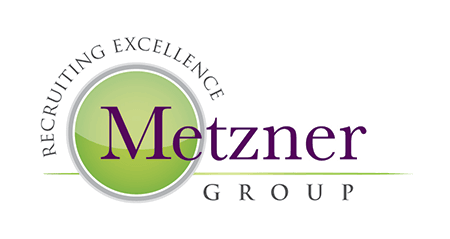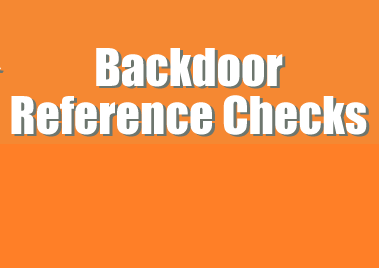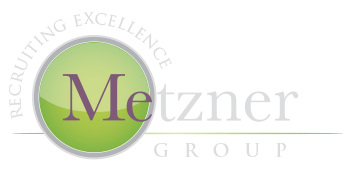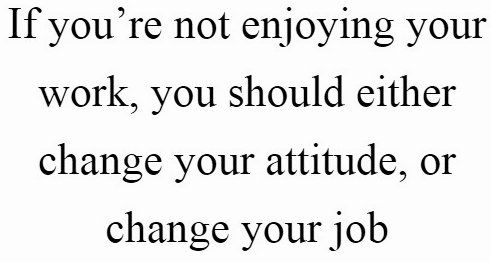
BLOG
Blog

By Carol Metzner
•
11 Jan, 2022
During 2021, growth through mergers and acquisitions (M&A) continued to be a stronghold within the North American architectural and engineering consulting marketplace. Rusk O'Brien Gido & Partners reported that 2021 was a record-breaking year for A/E M&A activity. Professional services firms competing for talent have figured out that to grow in new regions or new disciplines, M&A or recruiting through full team take-outs is a viable option. Traditionally, firms identify, recruit and hire practice builders or leaders in a specific market sector or location. These strategic hires are then tasked to build a team. While this practice still exists, many firms are targeting specific firms or leaders with cohesive teams to shorten the timeline for growth. These teams are enticed to move together for a new opportunity. It is a win for the team and a win for the hiring company! There is an old saying "People leave managers, not companies." While that can be true, it is also a fact that people leave companies to stay with their managers. While firms have tried to thwart efforts of teams leaving by demanding leaders sign non-compete and/or non-solicit contracts, they are finding that staff and the courts are frowning on such agreements. The U.S. Department of Justice's promise to criminally prosecute “no-poach” agreements, have left employers questioning how to protect their employees and teams from being "poached" or recruited by competitors. For clarity, a no-poach agreement is an agreement between two or more employers not to hire employees away from each other. Recruiting in the A/E marketplace for 30+ years, I have seen recruiting trends come and go. M&A and team take-outs are only going to increase as the market for talent tightens. A client recently asked me what ideas I could offer to keep talented staff and teams from leaving. The answers are many and varied. At the top of the list is reviewing company culture, something that is incredibly difficult to change. Exciting projects, compensation and great colleagues are great places to start...but lately staff and their teams won't accept a company culture that views them as widgets.

By Carol Metzner
•
07 Jan, 2022
Recently a LinkedIn connection commented on a posting that I put emotion in my recruiting. It implied that was not a good quality and one should focus on facts when talking to candidates. Job change, whether by choice or force, brings with it a myriad of emotions. When talking with potential candidates, I think it is critical to understand the “feelings” that accompany the logical factors that go into a decision to explore new opportunities. Based on 35 years of my market specialty of executive search in the A/E sector, the majority of clients and candidates working with me are self-described logical thinking types. Recently, I read a description of logical thinking decision makers as one in which “skills require and involve a progressive analysis, for example, by weighing all available options, using facts and figures, and making important decisions based on the pros and cons. They do not take into account the elements of feelings and emotions.” Using logical thinking only and ignoring the strong emotions that are involved in leaving one employer for a next is a recipe for disaster. Many of us spend more hours working then not. Even with Covid-19, our computers and phones keep us connected to colleagues and bosses. Board of Directors, leadership teams and project groups still meet. We foster connections that feel like an extension of our families. Leaving an employer means disappointing friends, colleagues, bosses and clients. Even when leaving for an outstanding career opportunity, it is common to experience some sense of loss. Not acknowledging the feelings involved will also lead candidates to be shocked when counter offers are made, which combine money and guilt. If one is fired from their job, then a host of rational and irrational emotions come up to the surface. Again, no acknowledgement will lead a candidate to possibly accept a bad job offer. So, job change is rarely made without emotion. Utilizing logic and understanding the emotions with job change and decision-making can help you to make a solid, rational decision. Choosing a recruiter who understands both, can help you to navigate the less than smooth waters and get you successfully to your destination.

By Carol Metzner
•
23 Apr, 2021
The talent market for architects and civil/environmental engineers is at an all-time competitive high. Consulting firms, public agencies and municipalities are struggling to find candidates. Recruiters and talent acquisition leaders are crafting value proposition presentations to encourage potential candidates to consider even informal conversations. In response, employers are resorting to strong financial counter offers and, in some cases, unrealizable promises to keep staff from leaving. Salary, bonus and stock increases, work from home and flexible work hours are back in the spot light. If 2020 taught us anything, it was that life is too short to work for a firm that doesn’t appreciate or recognize its staff – at all levels. Executives find themselves frustrated with decisions that their Board of Directors made last year. These executives are confidentially exploring opportunities that give them increased input and control. Similarly, increases in mergers and acquisitions leave many leadership staff competing for their current roles or moved into others. These executives, who were seemingly content and unobtainable prior to the pandemic, are ready to explore new horizons. Competition is fierce for firms that turn to acquisitive growth. They are looking to supplement expansions with strategic hires. Attracting and hiring market-specific sector leaders and experienced operations executives are keys for firms reaching 2021/2022 initiatives. Candidates are evaluating their future boss, ability to contribute to the company in a meaningful manner and financial incentives that reward personal success. Attempting to attract, hire and retain all levels of project staff was challenging pre-pandemic and has only increased in difficulty. Employers must offer more than salary to attract these viable candidates. Many are looking closely at flexible return to office policies, company culture, challenging projects and most importantly opportunity for advancement. If employers can’t show a clear path for advancement, then they don’t stand a chance against a competitor with transparent goals. Has your company re-designed incentives for 2021 to retain and attract top talent?

By Carol Metzner
•
23 Apr, 2021
Being ethical simply means “doing the right thing.” Recruiters are hired to be internal or external hiring and talent experts. As an executive search consultant, internal corporate or agency recruiter, the goal should always be to make the right match for the open opportunity and the company. In the current marketplace, there has been an increase of recruiters who find themselves desperate to make a placement. Corporate recruiters are working to keep their jobs safe from layoffs and third-party recruiters and executive search firms are concerned with potential decreased financials. Add to this, job seekers who are worried about the pandemic, unhappy in their current roles, or laid off and need a job. This makes the recruiting business ripe for unethical recruiting practices and pushing through a bad opportunity/job match. Many civil engineering consulting firms have furloughed or let go of staff. Conversely, many civil engineering consulting firms have taken the opportunity to make “investment” or strategic hires to their leadership teams. As an architecture and civil engineering executive recruiter with more than 30 years supporting ENR top 500 consulting firms, I continue to be astounded by stories of everyone looking out for themselves at the expense of their employers, clients and/or job seekers. These recruiters are so desperate to say “I filled that open requirement” that they will gloss over the candidate characteristics that make for a less than good “fit” for the position or company. They recommend candidates and encourage their hiring authorities to move forward, overcoming any concerns that may be present. A candidate-job mismatch damages a consulting firm’s ability to further their goals, effecting the bottom line that then effects more staff. The mismatch may be uncovered in a year, but it will be uncovered. While being able to support their family for a year, the mismatched candidate will find themselves back looking for a job while having to explain another job change. Employers find themselves explaining to clients and staff why they are recruiting again to fill a vacancy. And, the recruiters are off onto something else. Recruiters must take time to evaluate the candidate-job match. Our job is to advise our hiring leaders to make the BEST match – not the quickest hire. Recruiters need to stop thinking of themselves and take a step back. The right fit is out there for your open opportunities. Do the right thing for your client, employer or job seeker. If you were worried about your job before trying to force a square peg into a round hole, consider the likely consequences after making such a desperate move. More importantly, you will have a positive effect providing good value to others!

By Carol Metzner
•
16 Sep, 2020
Since 2017, much of America has experienced a fairly consistent sense of turmoil. In spite of this, firms in the A/E marketplace view the remainder of 2020 with a guarded sense of optimism. This encouragement is largely due to the anticipation that a federal infrastructure bill will be passed, funding for clean energy projects and an extension of the production tax credits for renewables. Throughout the first quarter of 2020, we were in a candidate-driven marketplace. Leadership transition trends continued through succession planning and recruiting efforts. Mergers and acquisitions fueled talk around the water cooler and in boardrooms. The expectation, as it has been since 2017, was that the company with the best-connected executive talent would win the best jobs. Candidates were receptive to exploring opportunities and compensation packages skyrocketed. Then the pandemic made its way around the world. The recruiting landscape reeled from the effects of COVID-19. During the second quarter of 2020, recruiting efforts and mergers/acquisitions were paused as executives triaged their firms. Furloughs, layoffs, reduced hours or salaries became the norm. During this time, management surveys within the A/E industry reported high utilization rates, as well as increases in client reported satisfaction. Employed staff found themselves working increased hours. Whether attributing the increase to lack of commute time or fear of losing their jobs, more inquiry is needed. Firms continued to navigate quarantines for some staff and essential employee designation for others. Backlog kept firms moving forward. They also reported an increase in proposal rate. By June, firms slowly re-engaged candidates, conducting multiple virtual interviews and socially distanced in-person meetings. By July, recruiting returned with a vengeance. While layoffs had produced job seekers, there existed, and still exist, an abundance of opportunities. Mid- and junior-level employees have been less open to leaving their employers. They report fears of being last hired, first to be cut. Firms desperate to attract these candidates are starting to find ways to differentiate their Employer Brand. As we enter September, highly sought-after senior-level candidates who agree to explore opportunities find themselves with multiple offers and attractive counteroffers. Additionally, smart companies are making investment hires to strategically expand company market sectors or locations. Mergers and acquisitions are rising, as are small intact group hires. Let’s look at 4 trends for 2020/2021 you should know as an employer or job seeker: Remote Work Location Remote working became a requirement for many employees. Surveys within A/E firms show that many staff do not want to return to a corporate office on a full-time basis. Across industries, according to a Cushman & Wakefield survey, younger workers are having a harder time working from home, and it’s pushing more of them to want to return to the office in some manner. Roughly 70% of Generation Z and 69% of millennials report challenges with telework, compared to 55% of Baby Boomers. To competitively recruit, firms will need to offer remote work options. Gender and Racial Diversity Executive surveys show that the A/E industry trails other industries in gender and racial diversity. Consulting firm company leaders rate inclusion as a top priority for recruiting. Multiple studies on increased employee engagement show that working in a gender and culturally diverse environment drives performance and satisfaction. Qualified diversity candidates will be highly sought after. Flexible Working Hours COVID-19 mandated flexible working hours for many employees. As many workers have turned their living rooms into workspaces, they find themselves managing child and senior care with limited options. Candidates will look for firms that allow creative working hour arrangements. Flexible work hours have been a luxury benefit for employees in the past. Now, candidates and employees will add this benefit to their decision check list. Employer Branding Employer brand describes an employer's reputation as a place to work and its value proposition to its employees. This branding is different than the more general corporate brand reputation and value proposition to clients. The ability to attract talent will depend on the company’s skill to accurately talk about the organization’s mission, values, culture and personality. A company’s online presence will be an incredibly important recruitment marketing tool. A LinkedIn survey says, a company’s employer brand is twice as likely to drive job consideration as its company brand. Other studies suggest that 65% of potential employees will research a company before even agreeing to an interview. Also, those potential employees are 40% more likely to go to work for a firm with a name they recognize. While none of these trends are surprisingly new to the recruiting landscape, they are of increased importance to our present environments. Companies will need to leverage every option they have to recruit talent. They will need to embrace and incorporate the trends into their benefits, practices and online presence.

08 Apr, 2020
Private equity continues investments in engineering companies. Whether buying firms as wholly owned assets or in part ownership, these venture capitalists are approaching firms with a multitude of proposals. Their growing role in the consulting engineering industry is welcomed to many firm stakeholders as infrastructure federal funding continues to lag. Starting in the early 2000's, firms engaged with outside funding to enhance growth either in new sectors or locations. An influx of capital permitted companies to become a base to “bolt on” other companies through mergers/acquisitions. Existing leadership teams were retaining their roles. Today, current company leadership teams are either not interested or unprepared for the rapid growth desired by the new stakeholders and are often finding themselves sidelined from the "C" suite. The Metzner Group, LLC has received a number of “C” level searches for investors and have found that key industry executives are eyeing these platforms as an opportunity to join for a 3-5 year term and guide growth. It offers them the excitement and challenge of a new opportunity with the potential to (in some cases) purchase their efforts when their contracts expire. Is this the new industry standard? Thoughts?

08 Apr, 2020
We have all been asked for a list of references who can speak about our professional capabilities. These people are usually colleagues, clients, staff and/or supervisors. Most of us choose a broad base of folks from our network whom we anticipate will offer positive information about our talents. These "candidate approved" references can provide information across a variety of areas to enable employers to ascertain "fit" with a particular opportunity. Throughout my 30 years of architecture and civil engineering recruiting, I have spoken with approved references who have provided not only positive information but more balanced insights that include areas for improvement as well as strengths. A good interviewer can pull honest reference information by asking the right questions and listening well to the answers then asking clarifying questions. A "backdoor" reference refers to gathering information from a source other than those "approved" names specifically given by a candidate. While backdoor references are not illegal, specific care must be taken and information weighted in an overall evaluation of the candidate. If we can get solid information from a reference, then why are many recruiters and companies completing backdoor references on potential hires? Many would report that these references could provide unbiased information and may feel more comfortable in speaking freely since their name was not actually offered directly. Caution must be used when evaluating this information. How credible is the reference and information given? Could there be a hidden agenda with the person providing information about the candidate? Is the information given based on fact or opinion? When was the last time this person worked with the candidate? Is the information they are providing relevant? Are social networks able to assist in painting a picture of the candidate that you can learn without involving a third party? With a person's current employer, no backdoor reference should ever be done. Recruiters and companies must always air on the side of caution when releasing information that a person is exploring an opportunity outside of their current employer. As a candidate, know that you need to be honest and upfront about your work and project history as these backdoor references will most likely happen. Recruiters and employers need to be aware that conducting backdoor references alerts potential competitors that an excellent candidate may be open to making a change. You could lose the candidate to a competing opportunity!

08 Apr, 2020
Engineering stress does not refer to a “measure of the intensity or internal distribution of the total internal forces acting within a deformable body across imaginary surfaces.” Here I am referring to the physiological demand many of us are experiencing in response to the ever changing engineering marketplace. My colleagues and I were on a conference call about our recruiting search assignments and the conversation went off onto a tangent. Those minutes that we talked about something other than our searches had me laughing and I felt stress melting away. I was much more productive for the hours following that call. This started me thinking, how can the civil engineering community pull together and de-stress, if only for a while? I ran an Internet search and found over 171,000 results for "ASCE and golf and 2018." Seems each ASCE chapter has some sort of annual golf charity. A great stress reliever and way to enjoy networking. Other association dinner meetings, luncheon seminars on topics other than work and corporate sponsored volunteer events provide avenues to spend time with colleagues in a non stress environment. Business social networking sites like the Civil Engineering Central Group on LinkedIn have also provided an opportunity for many of us to take a break, decompress and correspond (quickly) with our colleagues in a non-stressful environment. Do you have other ideas or suggestions?!

By MET
•
28 Mar, 2016
The 2016 job market is in full swing and with it, if you are lucky, comes choices. Seasoned professionals, as well as graduate engineers, find themselves approached with opportunities. Today’s civil engineering companies are as different as their employees. In your job exploration you need to...

Celebrating more than
30 years
An executive search firm, dedicated exclusively to A/E/P recruitment throughout North America.
QUICK LINKS
© 2024
All Rights Reserved | Metzner Group | Website & Hosting by SovoWeb a division of RedXWebDesign
